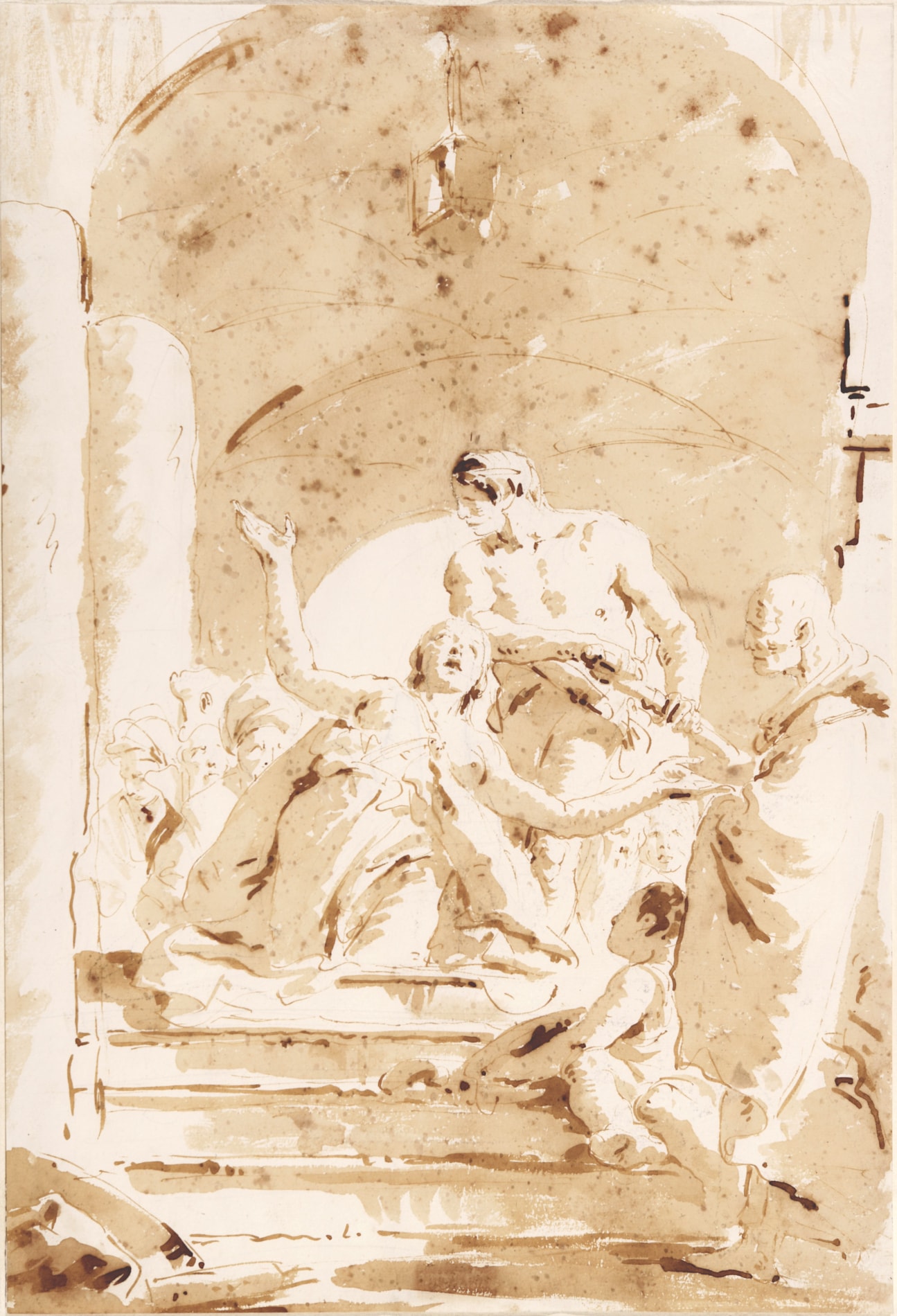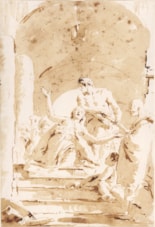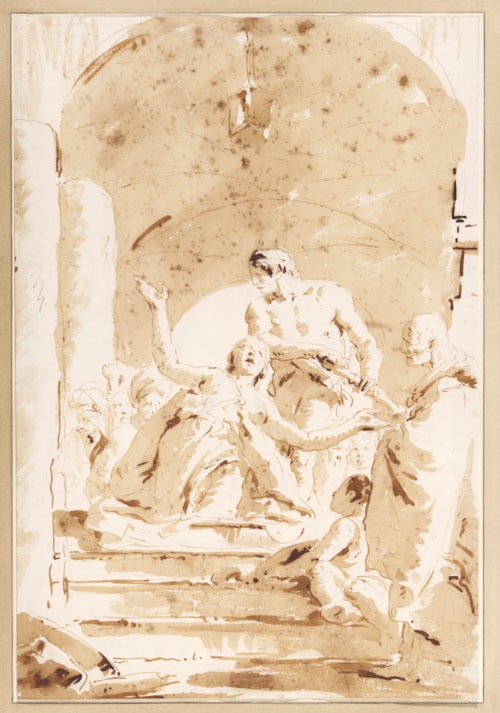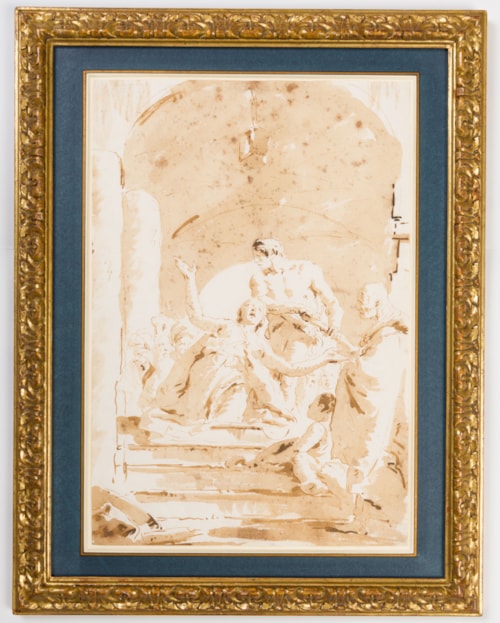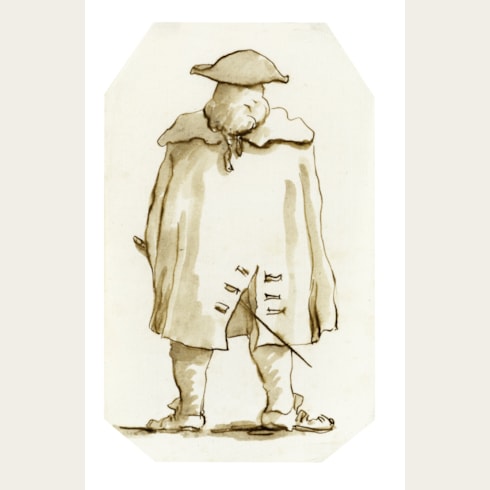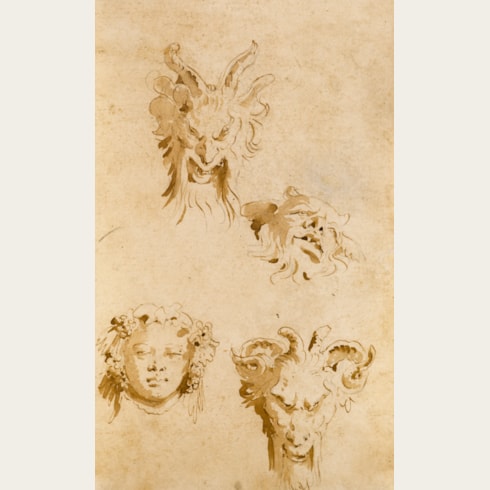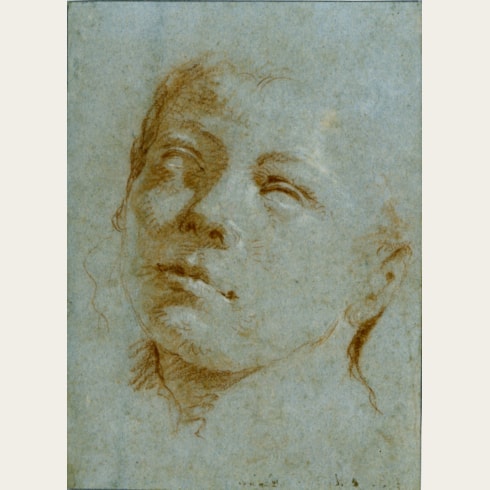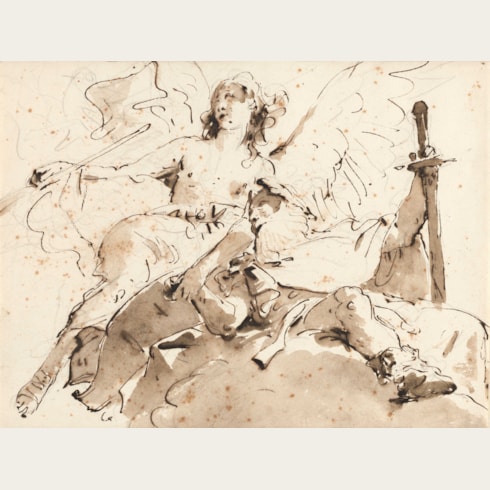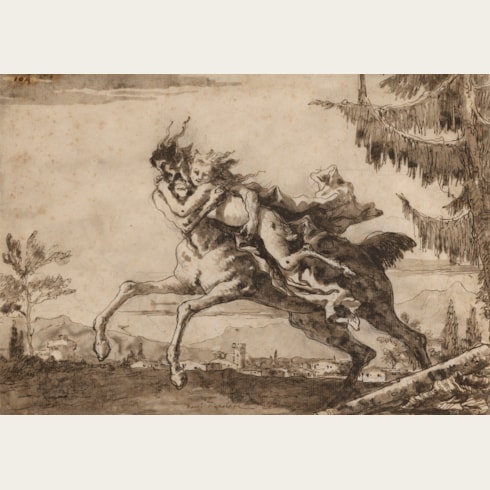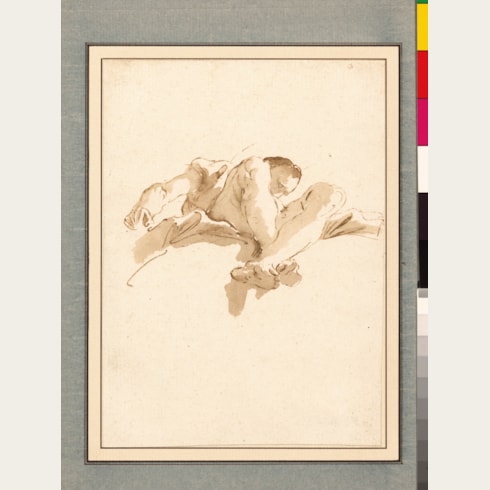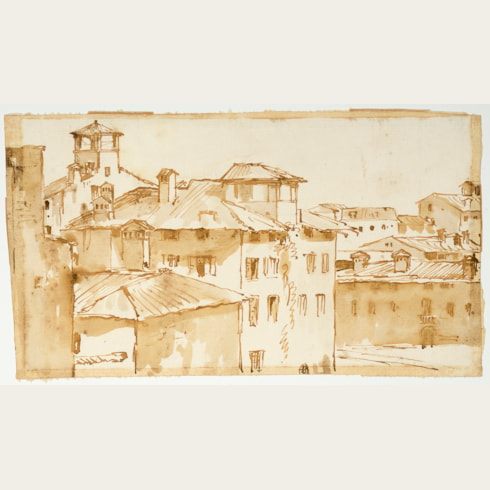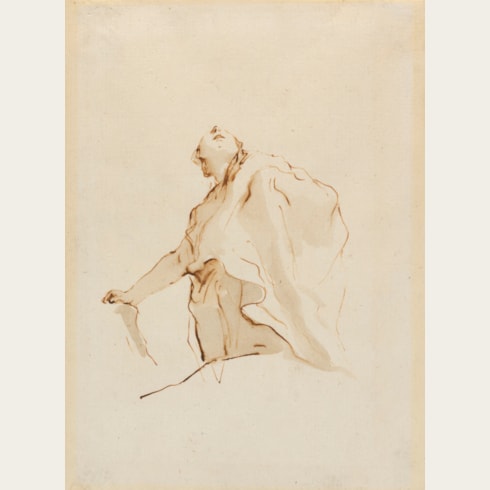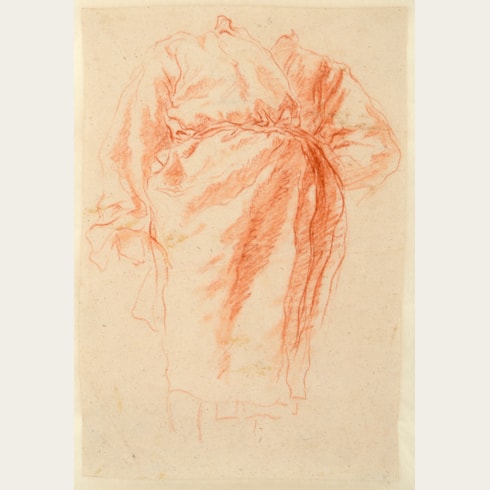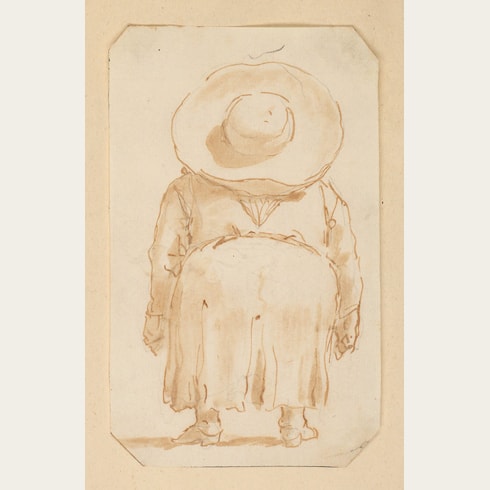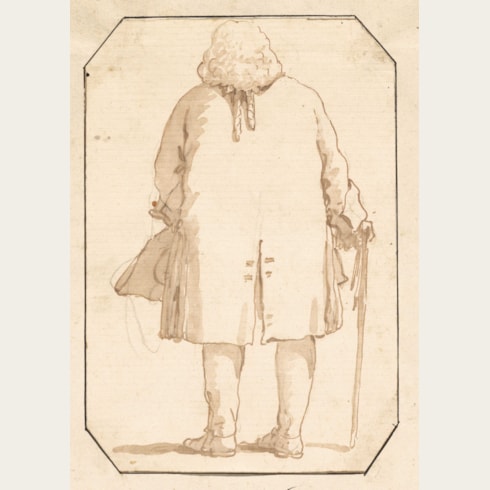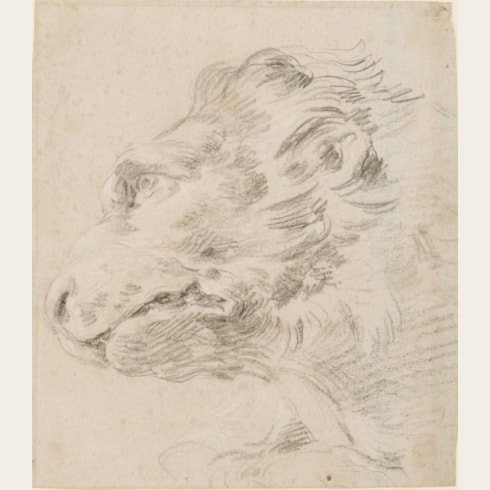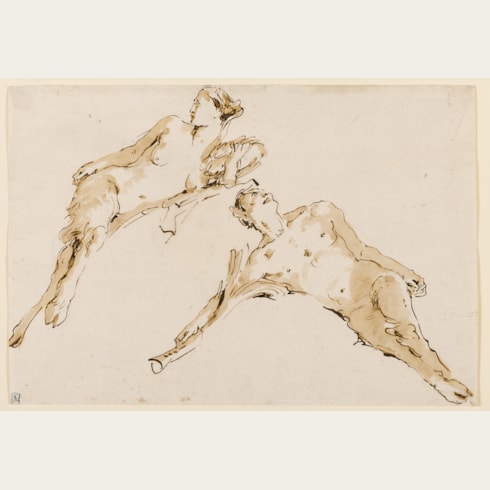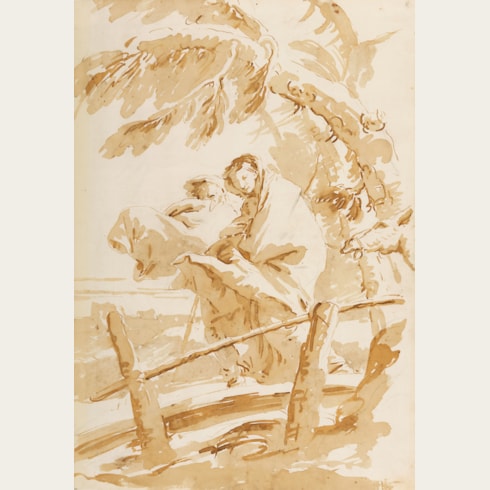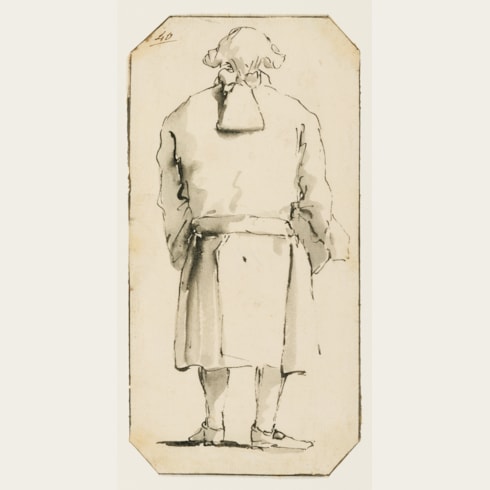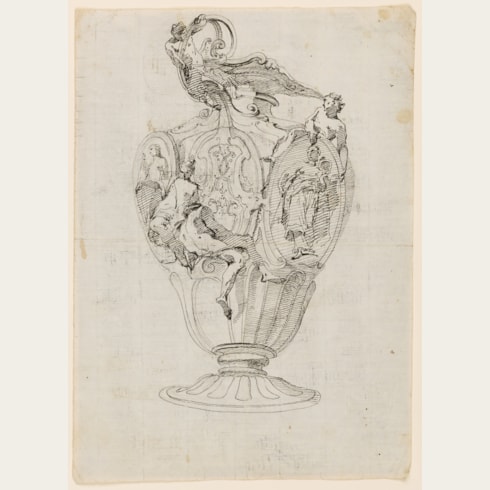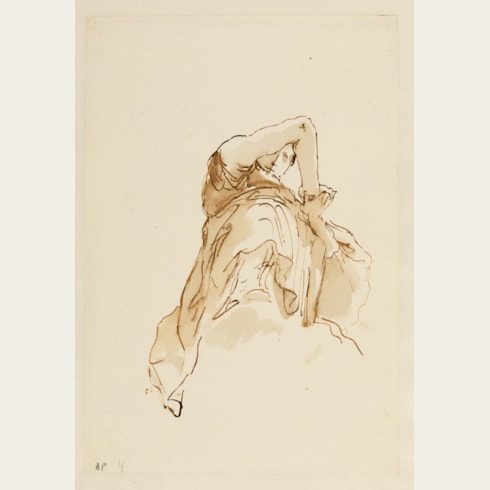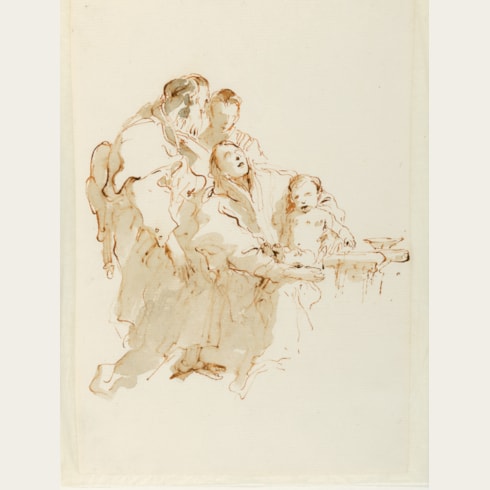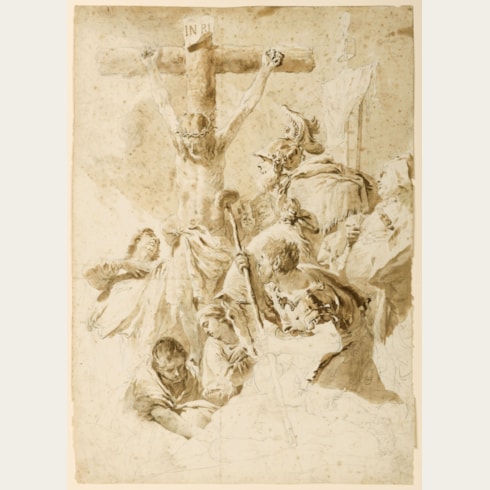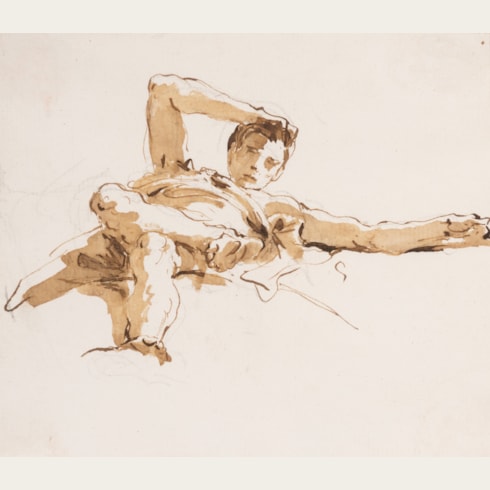Giovanni Battista TIEPOLO
(Venice 1696 - Madrid 1770)
The Martyrdom of a Female Saint
427 x 289 mm. (16 3/4 x 11 3/8 in.)
The provenance of many of the drawings by Giambattista Tiepolo that appear on the art market today can be traced to several large volumes or albums of drawings, put together by the artist or by his son Domenico. Probably shortly before his departure for Spain, the elder Tiepolo seems to have decided to arrange the numerous drawings that had accumulated in his studio – the product of some forty years of work – into a series of large, leather-bound albums, each containing about one hundred leaves. The drawings were mounted onto high quality paper, and bound into the albums sorted by theme or subject. In the early years of the 19th century, a number of albums of Tiepolo drawings were sold by his descendants to Venetian and foreign collectors.
This fine Martyrdom of a Female Saint was once part of one such album, which contained what has been described by the early 20th century scholar Tancred Borenius as ‘the incomparable series of Tiepolo drawings which belonged to the late Prince Alexis Orloff, and was dispersed at a memorable sale in Paris, on April 29 and 30, 1920.’ This so-called ‘Orloff’ album contained ninety-six pen and wash drawings by Giambattista Tiepolo dating from throughout his career, from around 1715 to about 1760. All in remarkably fresh condition, the contents of the album included many finished presentation drawings, such as this Martyrdom of Saint Agatha. The album of Tiepolo drawings eventually came into the possession of Prince Alexis Nikolaevich Orlov (b.1867), who probably inherited it from his ancestor, the Russian writer and politician Grigory Vladimirovich Orlov (1777-1826), who spent much of his life in Europe and may have purchased the album in Venice.
The earlier history of the album before it entered the Orlov (or Orloff) collection, however, remains a mystery. As another early scholar of Tiepolo drawings, Detlev von Hadeln, has noted, ‘It does not seem difficult for other Venetian contemporaries of Tiepolo to collect in one album a hundred and more of his drawings. Quite unique was that which when divided up constituted the collection of Prince Alexei Orloff. In this case a connoisseur had been able to search out the choicest of the choice; unless we can suppose that the commissions of a Maecenas were in question, to whom we owe the creation of the brilliant variations on the theme of the Annunciation and of the Flight into Egypt.’
The leading painter in Venice for much of his career, Giambattista Tiepolo was also undoubtedly one of the finest Italian draughtsmen of the 18th century. That his drawings were greatly admired in his lifetime is confirmed by contemporary accounts; indeed, as early as 1732 the writer Vincenzo da Canal remarked that ‘engravers and copyists are eager to copy his works, to glean his inventions and extraordinary ideas; his drawings are already so highly esteemed that books of them are sent to the most distant countries’. From the late 1730’s until his departure for Spain in 1762, Tiepolo enjoyed his most productive period as a draughtsman, creating a large number of vibrant pen and wash studies that are among the archetypal drawings of the Venetian Settecento. As one recent scholar has commented, ‘From the start of his career [Tiepolo] had enjoyed drawing as an additional means of expression, with equally original results. He did not draw simply to make an immediate note of his ideas, nor to make an initial sketch for a painting or to study details; he drew to give the freest, most complete expression to his genius. His drawings can be considered as an autonomous artistic genre; they constitute an enormous part of his work, giving expression to a quite extraordinary excursion of the imagination; in this respect, Tiepolo’s graphic work can be compared only with that of Rembrandt.’
Tiepolo’s drawings include compositional studies for paintings and prints, drawings of heads, figure studies for large-scale decorations, landscapes and caricatures, as well as several series of drawings on such themes as the Holy Family. Many of these drawings were bound into albums by theme or subject, and retained by the artist in his studio as a stock of motifs and ideas for use in his own work, or that of his sons and assistants.
Provenance
By descent to Prince Alexis Orlov (Orloff), Paris
The album broken up and dispersed at his posthumous sale (‘Collection de Son Excellence feu le Prince Alexis Orloff’), Paris, Galerie Georges Petit, 29-30 April 1920, the present sheet as lot 125 (‘Etude présumée pour le Martyre de sainte Agathe du Musée civique, à Venise. Plume et lavis de bistre. Haut., 41 cent.; larg., 28 cent.’, sold for 17,500 francs)
Private collection, Switzerland
Anonymous sale, Bern, Galerie Kornfeld, 6 June 2008, lot 9
Private collection, France.
Literature

